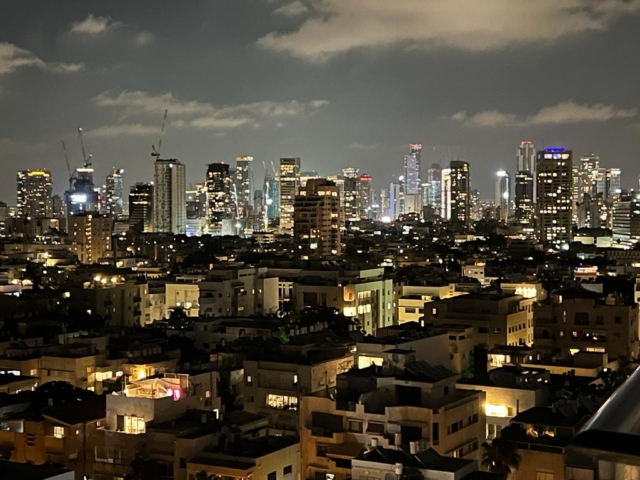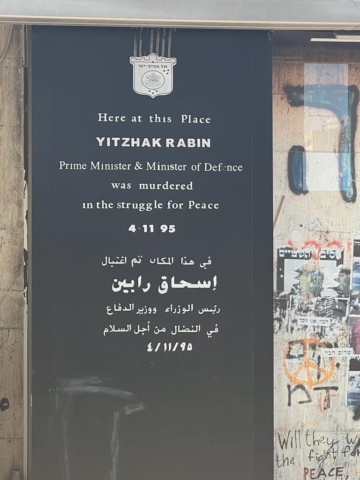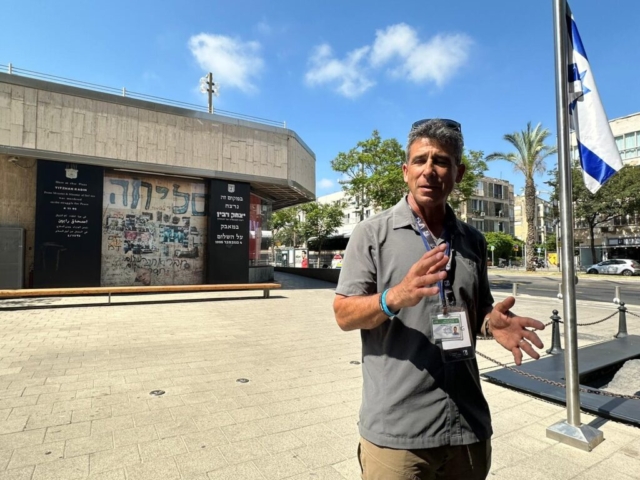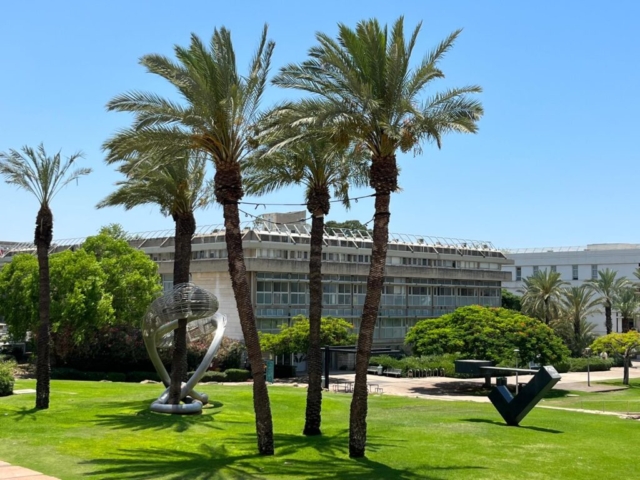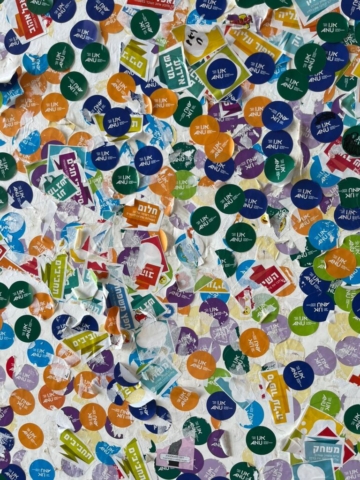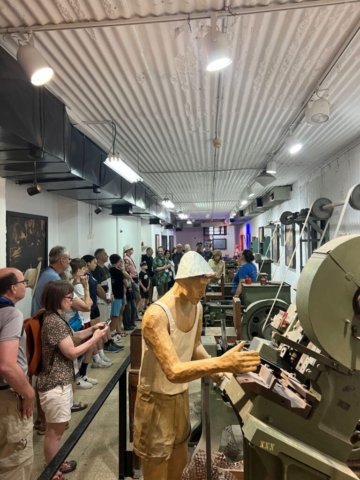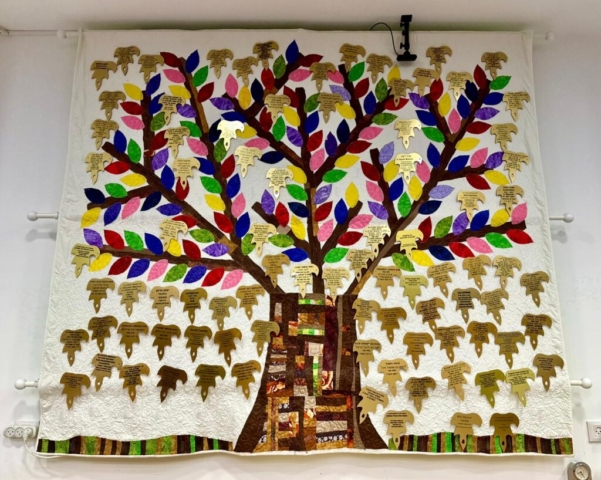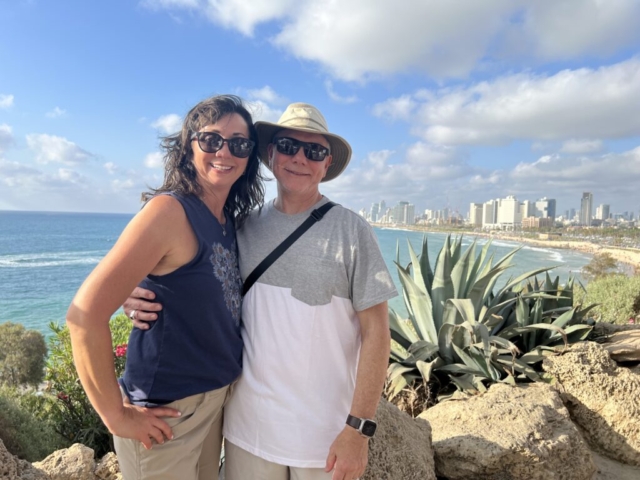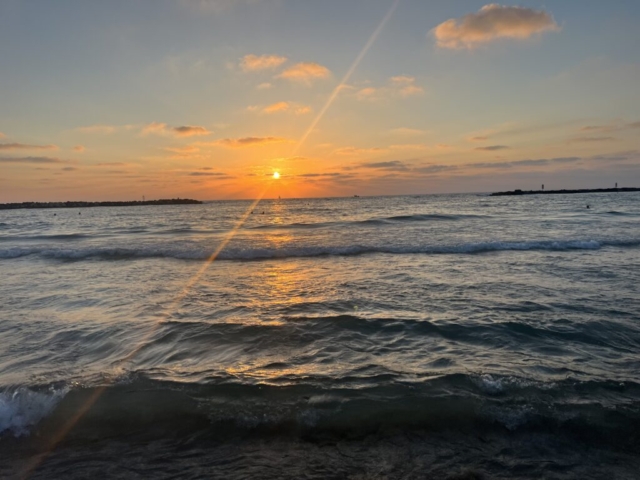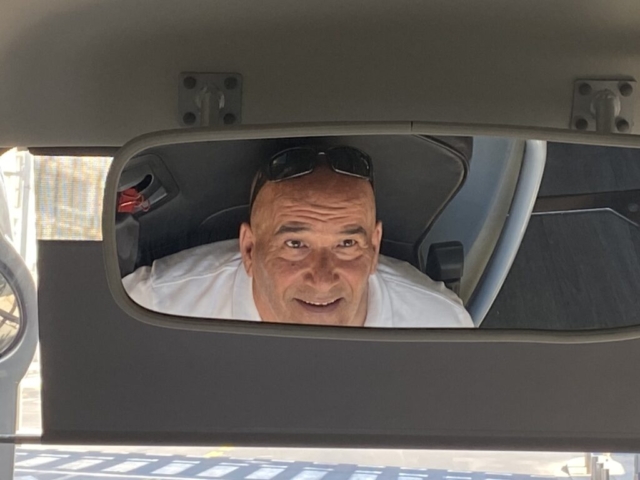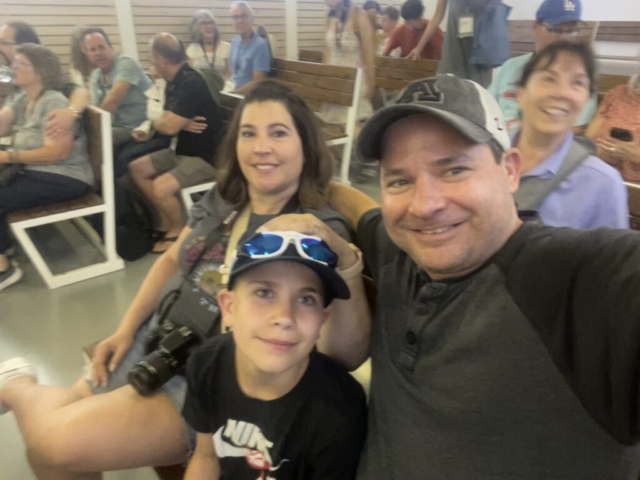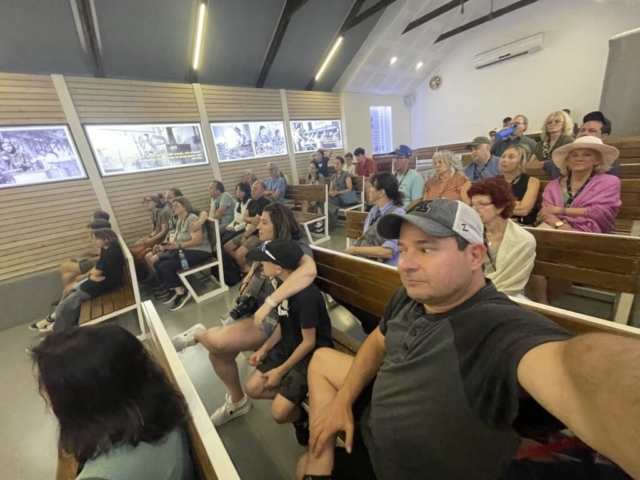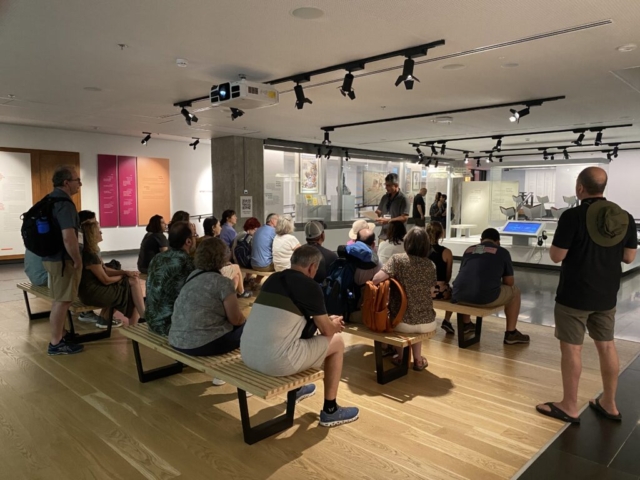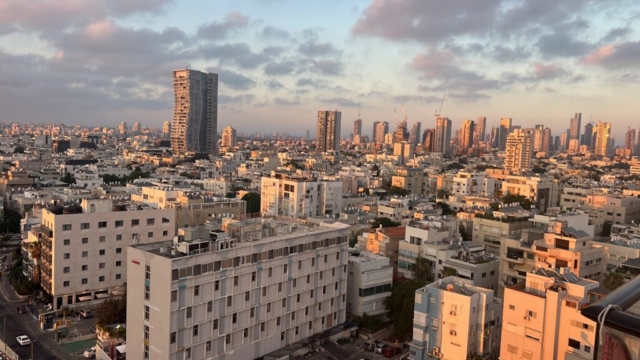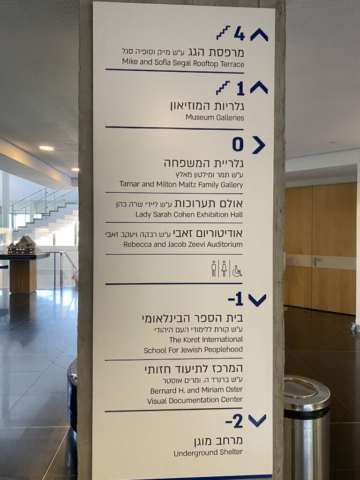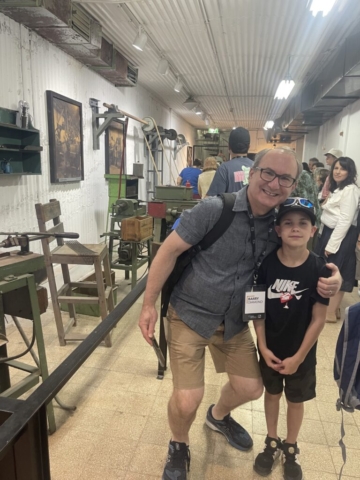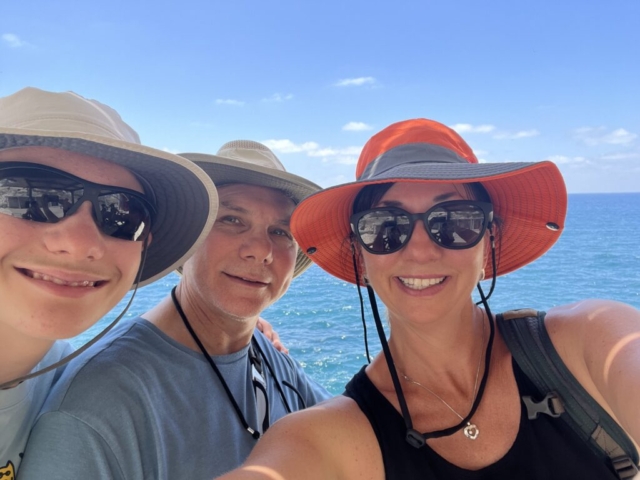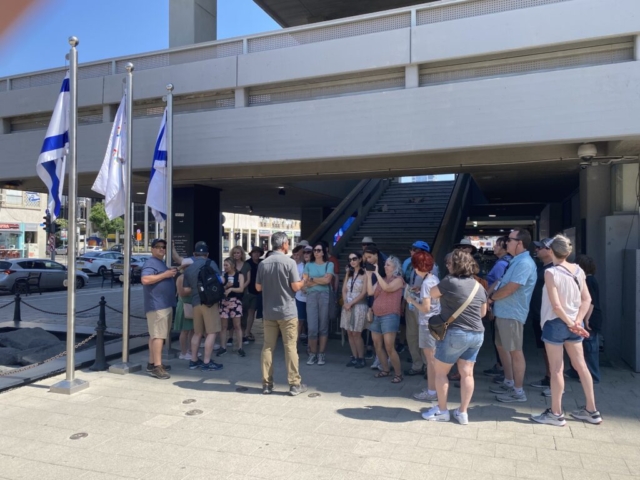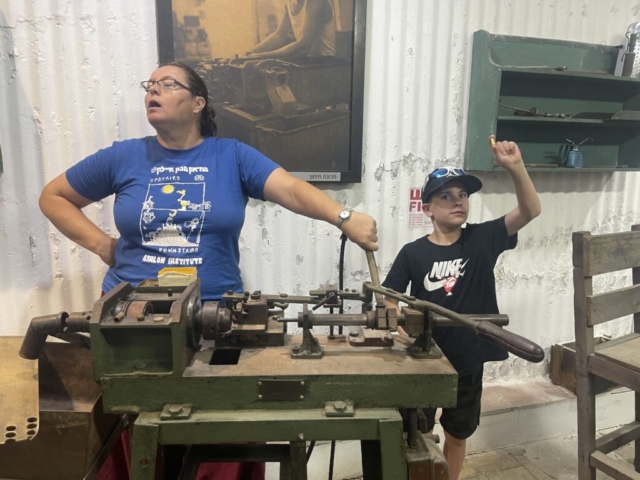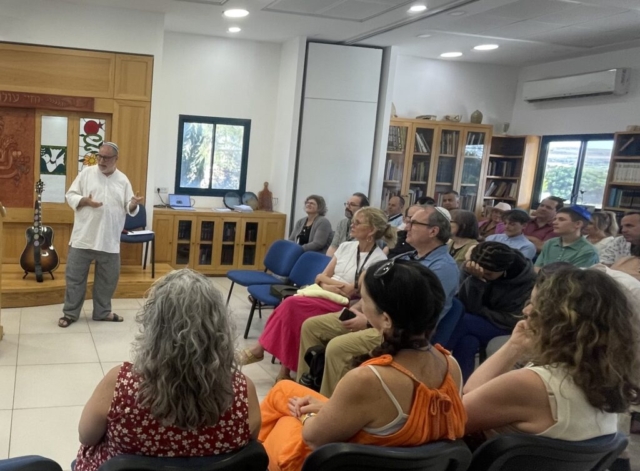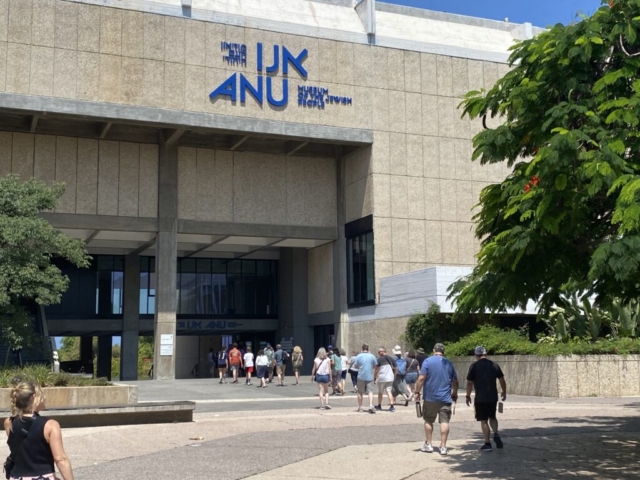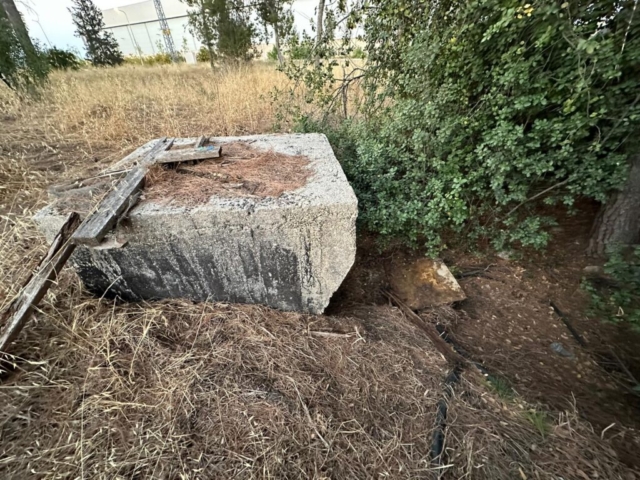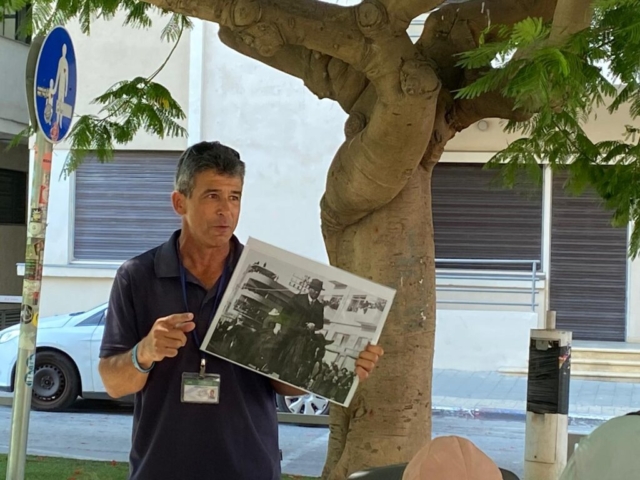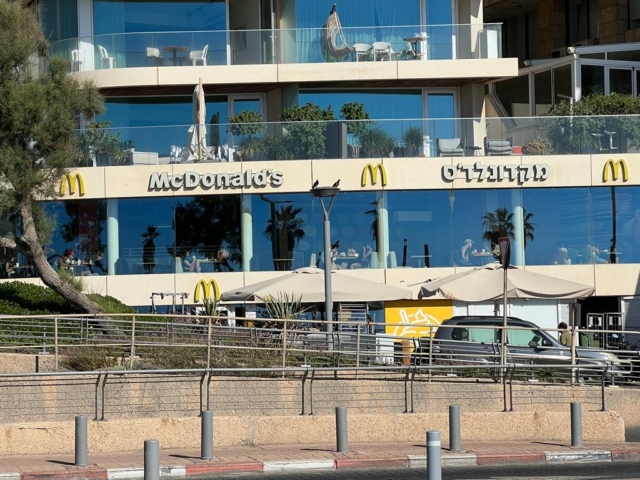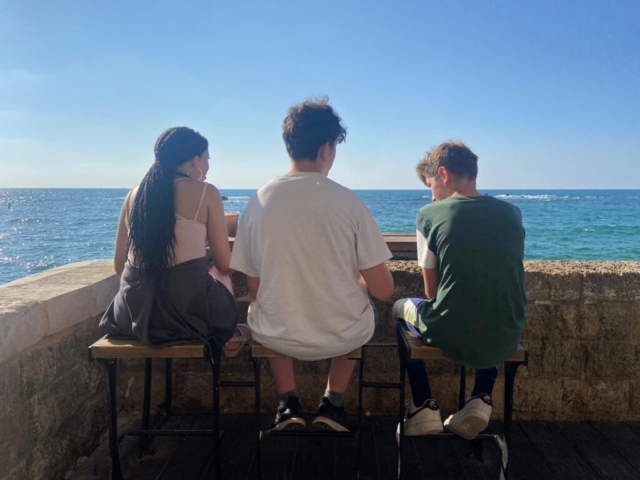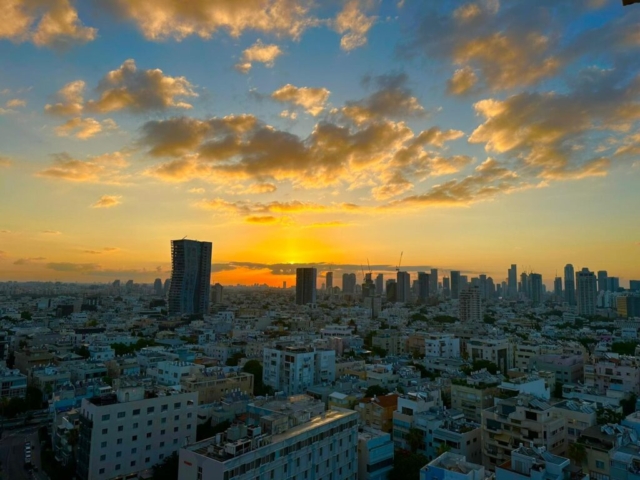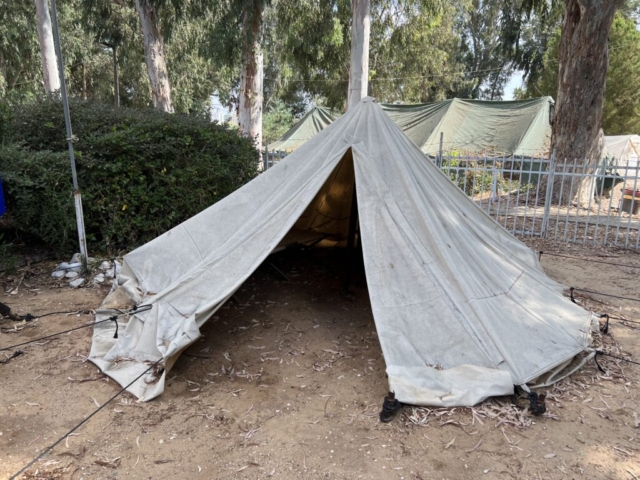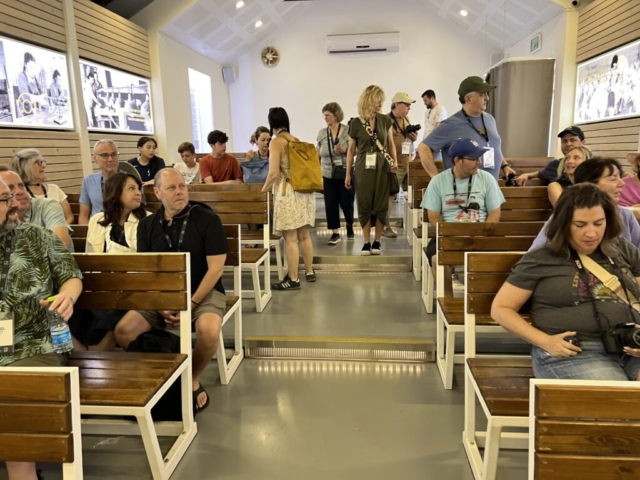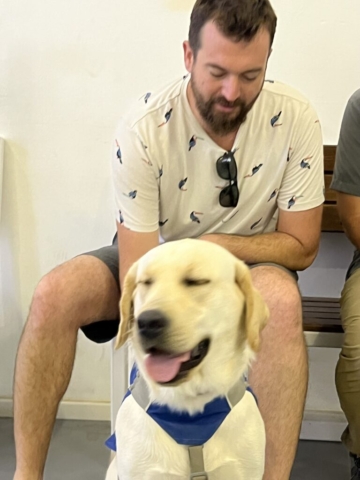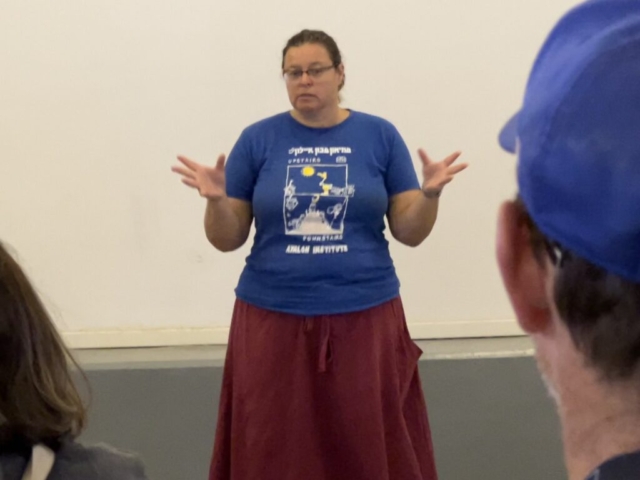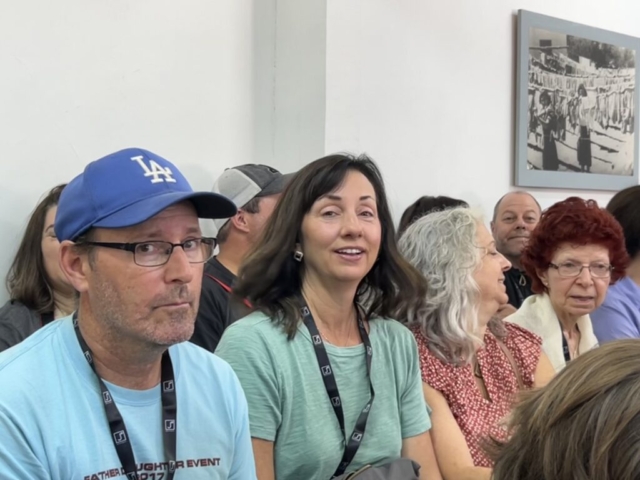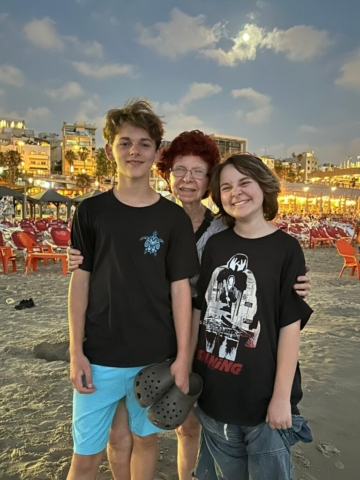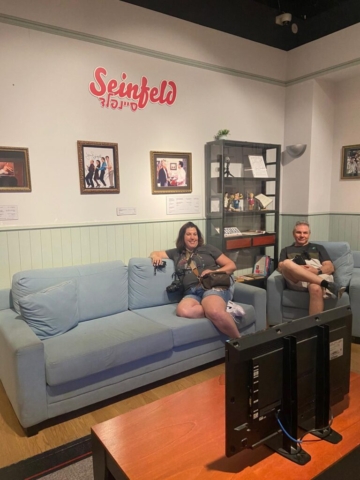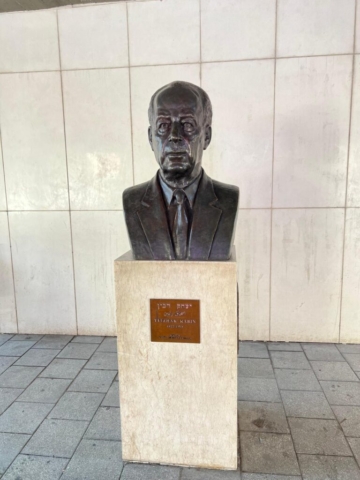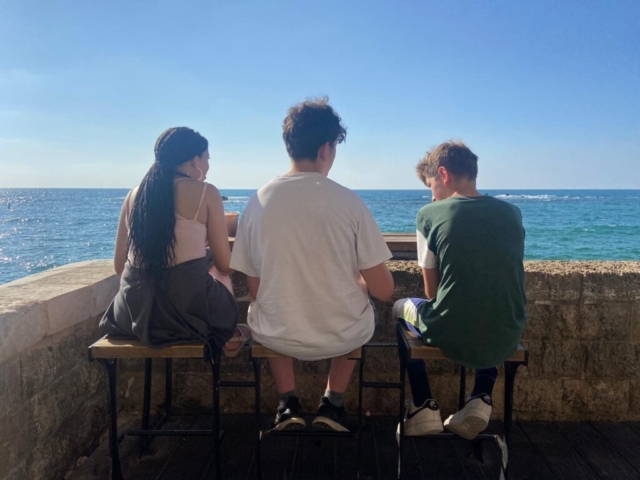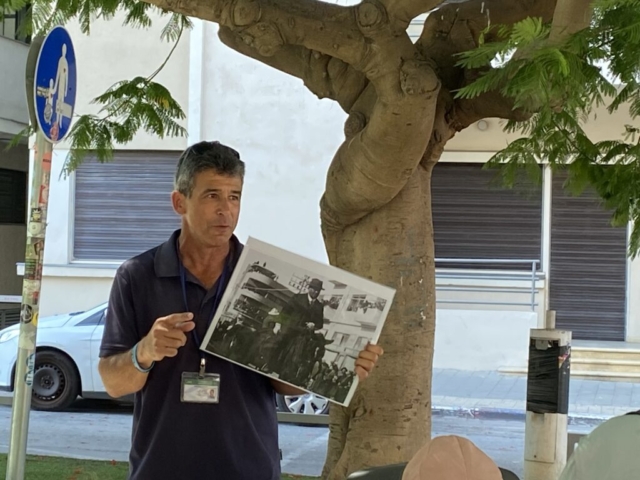Today was an absolutely magnificent day, but I need to convey our experiences a bit out of order.
We began today’s tour with our wonderful driver, Yoram who handles this huge bus like it’s a sports car. I still can’t believe how he maneuvers this behemoth. Thank you, Yoram!
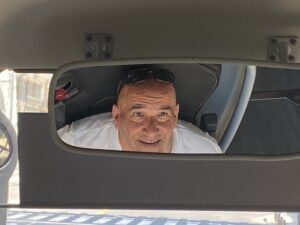
We explored two themes today: bullets and visions.
Bullets: Noble and Tragic
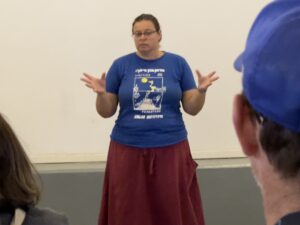 We began our day at the Ayalon Institute which was unfamiliar to me as it opened after I studied, and toured in Israel. The institute tells the story of a small group of men and women who are sworn to secrecy upon the likely consequence of death. Our tour guide explained that the Ayalon institute is primarily comprised of a few buildings with one unique surprise. This institute operated during the years that the British ran Palestine before Israel became a state. The British did not want violence to break out in Palestine, so they outlawed the possession of firearms and the production of bullets. It was already clear that the British would be leaving and that the neighboring Arab countries would attack the fledgling state. Among the things they needed most was bullets.
We began our day at the Ayalon Institute which was unfamiliar to me as it opened after I studied, and toured in Israel. The institute tells the story of a small group of men and women who are sworn to secrecy upon the likely consequence of death. Our tour guide explained that the Ayalon institute is primarily comprised of a few buildings with one unique surprise. This institute operated during the years that the British ran Palestine before Israel became a state. The British did not want violence to break out in Palestine, so they outlawed the possession of firearms and the production of bullets. It was already clear that the British would be leaving and that the neighboring Arab countries would attack the fledgling state. Among the things they needed most was bullets.
They had a two-step solution to their problem: step 1) buy some old, second-hand bullet-producing machinery from Poland and smuggle it into Palestine (the name or the lane before it becomes the State or Israel), step 2) don’t get killed by the British. Creating bullets was highly illegal. If caught, there is every possibility that the British would have executed the bullet producers. In order to prevent that, a group of dedicated teens and twenty-somethings risked their lives by cleverly building an underground bunker to house the production of the bullets.
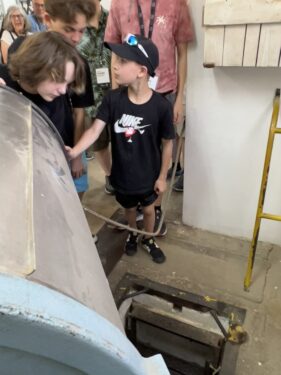 One entrance to the bunker was hidden under an industrial washing machine (a la Walter White’s drug production equipment in the television show “Breaking Bad”)
One entrance to the bunker was hidden under an industrial washing machine (a la Walter White’s drug production equipment in the television show “Breaking Bad”)
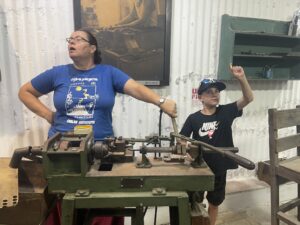
One of our students becomes adept a shortening the bullet casing. The person who worked at this station was called “the mohel.”
The quarters where the bullets were produced where tight, the machinery was loud, and keeping it a secret was crucial. Our guide described the ingenuity required to hide their activities. Fortunately, they were never caught, but they did produce over two million 9mm bullets that contributed to Israel’s prevailing over the enemy countries that surrounded them.
Tragedy in Tel Aviv
While the bullets from Ayalon played a crucial role in the war of independence, other bullets were tragically employed to perpetuate a great tragedy. After Yitzchak Rabin signed the Oslo accords giving a good portion of the west bank to the Palestinians. Some people loved his bold move, other hated it, and him, with a passion. 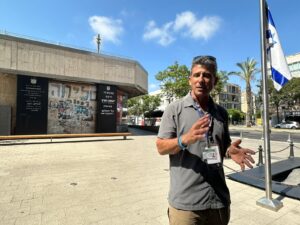 There was weeks of vicious and violent rhetoric depicting Rabin as a Nazi or wearing a keffiyeh, the head covering worn by Arabs, including Yassar Arafat. One of those haters was a religious Jewish law student who snuck up behind Rabin and murdered him in cold blood. The country was devastated and in many ways it still is. People drew graffiti on walls saying, “We’re sorry” and “End violence” as can be seen behind Uri, our guide. Later, a proper memorial was created to honor his memory.
There was weeks of vicious and violent rhetoric depicting Rabin as a Nazi or wearing a keffiyeh, the head covering worn by Arabs, including Yassar Arafat. One of those haters was a religious Jewish law student who snuck up behind Rabin and murdered him in cold blood. The country was devastated and in many ways it still is. People drew graffiti on walls saying, “We’re sorry” and “End violence” as can be seen behind Uri, our guide. Later, a proper memorial was created to honor his memory.
That Jewish terrorist had a different vision for how Israel should relate to their Arab neighbors and unilaterally destroyed a potential path to peace. But there are other competing perspectives that offer positive and compelling visions for what Israel could become.
Different Visions of Jews and Israel
On Shabbat afternoon we discussed the different images that Israelis have for their own counties as exemplified in two cities: Jerusalem and Tel Aviv. For many people Jerusalem represents holiness and resistance to change. It is the focal point of Judaism’s past and anchors our religious relationship to Israel in both a positive and negative sense. Jerusalem grounds our relationship with God as experienced through the ancient Temple and more tangibly through the Western Wall. But Jerusalem can also be an anchor, holding us back from the changes we must make to adjust to our future. 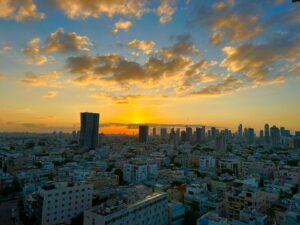 In contrast, Tel Aviv is a hopeful city, new and ever-changing. Just as stones are a central symbol of Jerusalem, technology is one of the products of Tel Aviv. And yet, some may think of Tel Aviv as a balloon, head in the air, dreaming of the future, but disconnected from deeper truths.
In contrast, Tel Aviv is a hopeful city, new and ever-changing. Just as stones are a central symbol of Jerusalem, technology is one of the products of Tel Aviv. And yet, some may think of Tel Aviv as a balloon, head in the air, dreaming of the future, but disconnected from deeper truths.
The power and promise of Israel is that there is a place for both, Jerusalem and Tel Aviv. Their competing visions remain in tension with one another, but that tension can be creative and can check the excesses of either vision on its own. It is not surprising that we begin with Tel Aviv and end with Jerusalem, but it could just as easily been in the opposite order as you will see when we discuss ANU.
ANU – Us, All Us Jews
In the spirit of Tel Aviv as ever changing, there is an imagine that is held in the hearts of many Israelis and it captured in spirit of the Diaspora Museum. Bet Hatfuzot, as it was known, told the story of the time when the Jews were kicked out of the Land of Israel and dispersed throughout much of the world. These dispersions occurred several times over our history and created Jewish communities that exist outside of Israel. Because these Jewish communities outside of Israel are the result of being dispersed, they are collectively called “the diaspora.” The Diaspora Museum paid homage to those communities outside of Israel because, according to the narrative of the museum’s curators, now those diaspora communities are of far less importance now that Israel has been reestablished. These communities are vestiges that we should remember in a museum, but we should also acknowledge them as no longer important.
As more Jews from a very vibrant diaspora attended this museum, we understood the well-meaning but patronizing message that is implied: the Jewish life in diaspora communities is, second rate or at least not as consequential. In time, the museum began to falter and was to be closed, but the indomitable spirit of Tel Aviv wouldn’t have it. Workers at the museum took over the building, allowing Bet Hafutzot to die, but in its place, created a deeper and more inclusive Jewish story that sees diaspora communities as well as Jewish life in Israel to contribute to the ongoing vitality of our people. Now, Jewish music from around the world is celebrated, as is Jewish dance and art. The voices of Jewish women who have been silenced for too many years, are now include and acknowledged. The museum recognizes that Jewish life is not epitomized by a man with a long white beard studying Talmud. While that is an important and beautiful expression, so is a passion for social justice, a commitment creating new Jewish rituals, an embrace of mysticism and other spiritual practices.
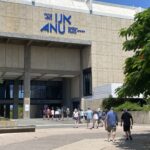 The name of this new museum is ANU which means “we” or “us.” It affirms that Judaism is not a single, monolithic entity, rather it is dynamic, inclusive and multifaceted. What a beautiful and hopeful message that we will bring back into our lives.
The name of this new museum is ANU which means “we” or “us.” It affirms that Judaism is not a single, monolithic entity, rather it is dynamic, inclusive and multifaceted. What a beautiful and hopeful message that we will bring back into our lives.

